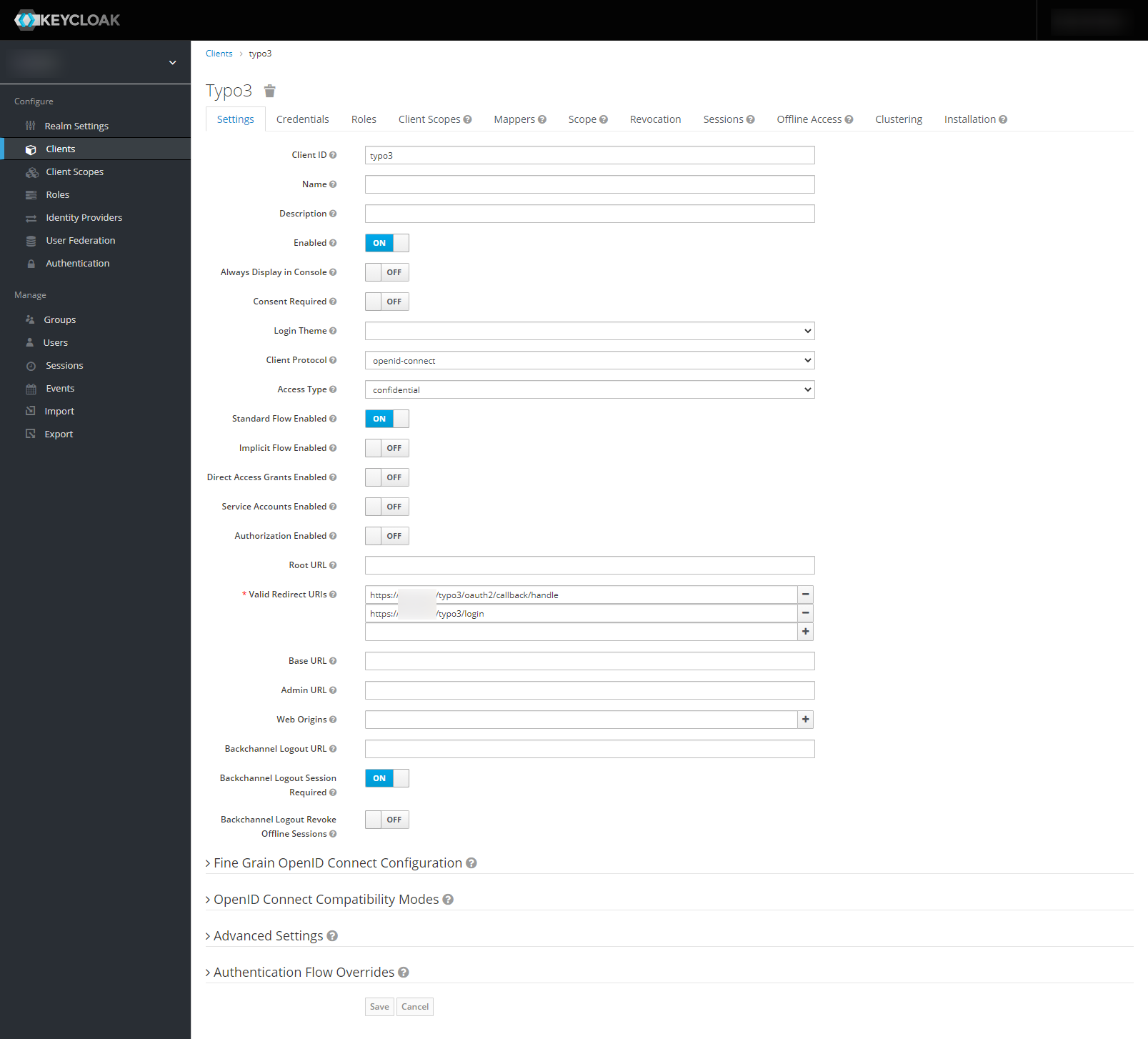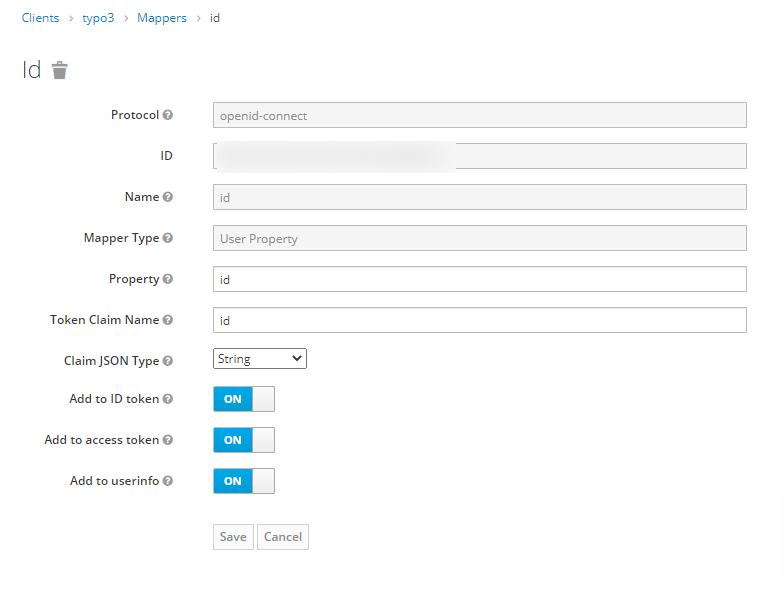Configuration with Keycloak¶
Note
This example contains the callback URLs which are required for TYPO3 v11.
Adding the OAuth2 app in Keycloak¶
Login to your Keycloak Administration Console
Go to your realm and create a new Client with protocol "openid-connect" and access type "confidential"
Enable the "Standard Flow"
Add the redirect URIs (backend):
https://<your-TYPO3-installation>/typo3/loginhttps://<your-TYPO3-installation>/typo3/oauth2/callback/handle
Add the redirect URIs (frontend):
https://<your-TYPO3-installation>/<callback-slug>
Save the client
Switch to the "Mappers" tab and configure a mapper for the ID field (which is necessary to successfully connect to TYPO3), after clicking create:
Enter "id" as Name
Choose "User Property" as Mapper Type
Enter "id" as Property
Enter "id" as Token Claim Name
Choose "String" as Claim JSON Type
Check all three check boxes
Save
Copy the client secret (Tab: Credentials) and client id


Adding the OAuth2 Keycloak app in TYPO3¶
Add the following configuration to your AdditionalConfiguration.php:
$GLOBALS['TYPO3_CONF_VARS']['EXTENSIONS']['oauth2_client'] = [
'providers' => [
'keycloak' => [
'label' => 'Keycloak',
'iconIdentifier' => 'oauth2-keycloak',
'description' => 'Login with Keycloak',
'scopes' => [
\Waldhacker\Oauth2Client\Service\Oauth2ProviderManager::SCOPE_BACKEND,
],
'options' => [
'clientId' => '<your-client-id>',
'clientSecret' => '<your-client-secret>',
'urlAuthorize' => 'https://<keycloak-domain>/auth/realms/<your-realm>/protocol/openid-connect/auth',
'urlAccessToken' => 'https://<keycloak-domain>/auth/realms/<your-realm>/protocol/openid-connect/token',
'urlResourceOwnerDetails' => 'https://<keycloak-domain>/auth/realms/<your-realm>/protocol/openid-connect/userinfo',
'responseResourceOwnerId' => 'sub',
],
],
],
];
Registering the icon (optional)¶
If you want to use a custom icon, in your site package Configuration/Icons.php register the icon like this:
<?php
return [
'oauth2-keycloak' => [
'provider' => \TYPO3\CMS\Core\Imaging\IconProvider\FontawesomeIconProvider::class,
'name' => 'key',
],
];
If you want to use the default icon instead, remove the iconIdentifier from the configuration.
